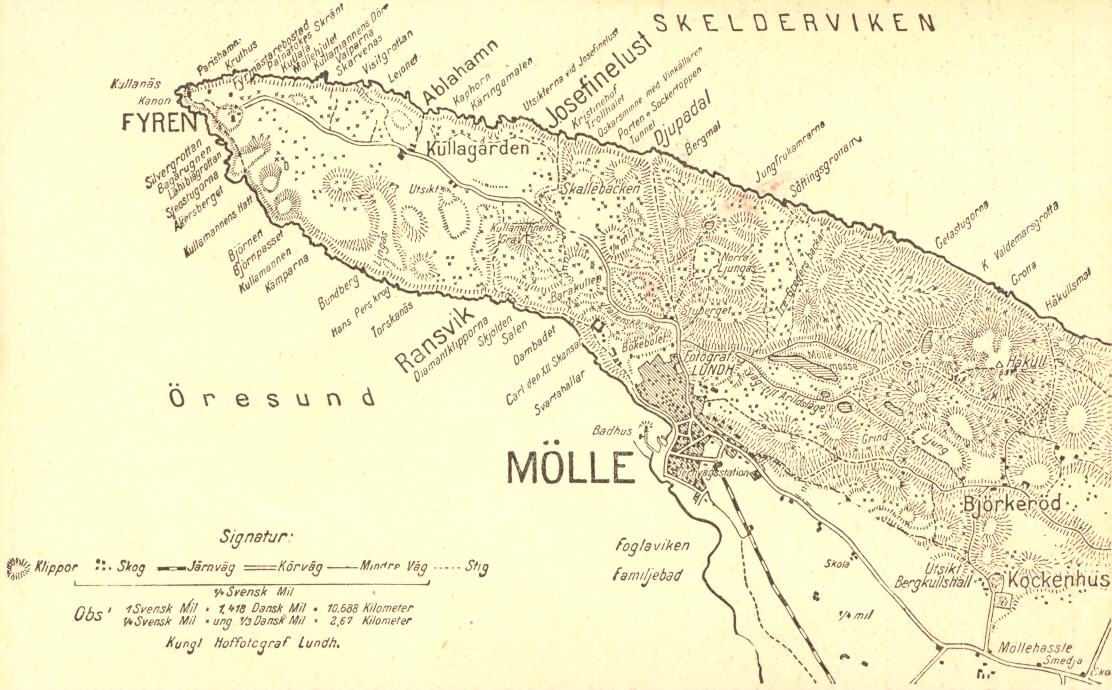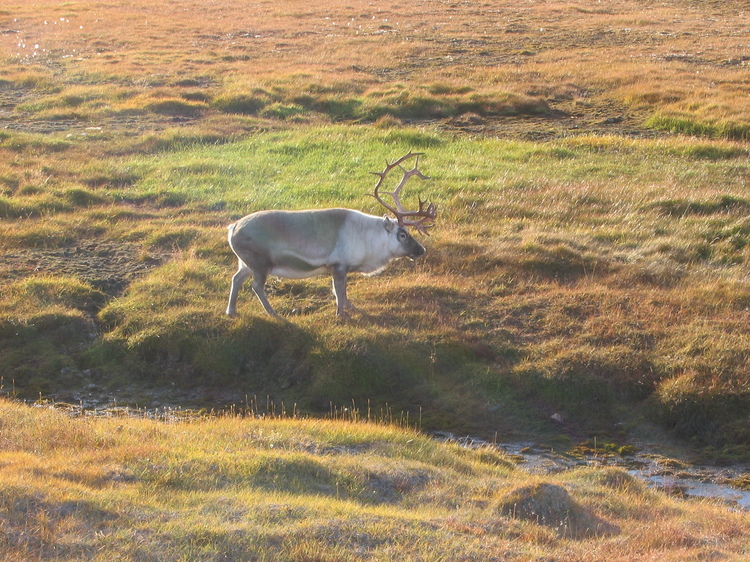|
Kullaberg
Kullaberg () is a peninsula and nature reserve of land protruding into the Kattegat in Höganäs Municipality near the town of Mölle in southwest Sweden. The site in the province of Skåne is an area of considerable biodiversity supporting a number of rare species and has been designated as an Important Bird Area (IBA) in Sweden as well as a Special Protection Area (SPA). The terrain is dominated by steep cliffs rising from the sea and rocky outcrops on the ridge above, the highest elevation being Håkull at 188 metres. Ridgetop vegetation includes a mixed hardwood broadleaf forest consisting of birch, beech, oak and pine trees with an understory of hawthorn, juniper, wild honeysuckle and blackthorn. Among the notable rare plants are spring vetchling, ''Lathyrus sphaericus''. Inhabited as early as the Stone Age, there are extant stone circles, grave mounds, ancient village remains and other archeological features. Kullaberg is administered by the Höganäs Forestry Boa ... [...More Info...] [...Related Items...] OR: [Wikipedia] [Google] [Baidu] |
Mölle
Mölle is a locality situated in Höganäs Municipality, Skåne County, Sweden with 715 inhabitants in 2010. It is best known for its scenic harbour and its location adjacent to the Kullaberg Nature Reserve. Its harbour, situated on the Kattegat Strait, provides services for marine fishing, watersports outings and tour excursions along the coast, especially the rocky shore of Kullaberg to the north. Fodor characterizes Mölle as "a small town set in spectacular isolation on the dramatic headland of the Kulla Peninsula". As a historic seaside resort, Mölle has hosted numerous technical and professional conferences such as: the Swedish Network of European Economists, Joint Swedish-Russian International Workshop on Information Theory; and the Royal Society (United Kingdom) of Tropical Medicine and Hygiene. Logistics Mölle can be accessed from the north south coastal road 111, which effectively accesses Mölle from the south and terminates at Kullaberg, just north of M� ... [...More Info...] [...Related Items...] OR: [Wikipedia] [Google] [Baidu] |
Skåne
Scania, also known by its native name of Skåne (, ), is the southernmost of the historical provinces (''landskap'') of Sweden. Located in the south tip of the geographical region of Götaland, the province is roughly conterminous with Skåne County, created in 1997. Like the other former provinces of Sweden, Scania still features in colloquial speech and in cultural references, and can therefore not be regarded as an archaic concept. Within Scania there are 33 municipalities that are autonomous within the Skåne Regional Council. Scania's largest city, Malmö, is the third-largest city in Sweden, as well as the fifth-largest in Scandinavia. To the north, Scania borders the former provinces of Halland and Småland, to the northeast Blekinge, to the east and south the Baltic Sea, and to the west Öresund. Since 2000, a road and railway bridge, the Öresund Bridge, bridges the Sound and connects Scania with Denmark. Scania forms part of the transnational Øresund Region. ... [...More Info...] [...Related Items...] OR: [Wikipedia] [Google] [Baidu] |
Kattegat
The Kattegat (; sv, Kattegatt ) is a sea area bounded by the Jutlandic peninsula in the west, the Danish Straits islands of Denmark and the Baltic Sea to the south and the provinces of Bohuslän, Västergötland, Halland and Skåne in Sweden in the east. The Baltic Sea drains into the Kattegat through the Danish Straits. The sea area is a continuation of the Skagerrak and may be seen as a bay of the North Sea, but in traditional Scandinavian usage, this is not the case. The Kattegat is a rather shallow sea and can be very difficult and dangerous to navigate because of the many sandy and stony reefs and tricky currents, which often shift. In modern times, artificial seabed channels have been dug, many reefs have been dredged by either sand pumping or stone fishing, and a well-developed light signaling network has been installed, to safeguard the very heavy international traffic of this small sea. There are several large cities and major ports in the Kattegat, including ... [...More Info...] [...Related Items...] OR: [Wikipedia] [Google] [Baidu] |
Höganäs Municipality
Höganäs Municipality (''Höganäs kommun'') is one of 290 municipalities of Sweden, in Skåne County in the southern part of the country. Its seat is located in the city of Höganäs. The rural municipality Höganäs, in which the first ''municipalsamhälle'' (a kind of borough managing matters of urban character) of Sweden had been established in 1875, received the title of a city in 1936. In 1967 it was merged with ''Väsby''. The present municipality was created with the reform in 1971 when the city was amalgamated with ''Brunnby'' and ''Jonstorp''. Geography The municipality is located on the Kullen peninsula, the extreme part of which is known as the nature reserve Kullaberg hill, with the picturesque villages of Mölle and Arild. The nature reserve is an Important Bird Area of Sweden and a location of several rare plant species. [...More Info...] [...Related Items...] OR: [Wikipedia] [Google] [Baidu] |
Honeysuckle
Honeysuckles are arching shrubs or twining vines in the genus ''Lonicera'' () of the family Caprifoliaceae, native to northern latitudes in North America and Eurasia. Approximately 180 species of honeysuckle have been identified in both continents. Widely known species include '' Lonicera periclymenum'' (common honeysuckle or woodbine), ''Lonicera japonica'' (Japanese honeysuckle, white honeysuckle, or Chinese honeysuckle) and ''Lonicera sempervirens'' (coral honeysuckle, trumpet honeysuckle, or woodbine honeysuckle). ''L. japonica'' is an aggressive, highly invasive species considered a significant pest on the continents of North America, Europe, South America, Australia, and Africa. Some species are highly fragrant and colorful, so are cultivated as ornamental garden plants. In North America, hummingbirds are attracted to the flowers, especially ''L. sempervirens'' and ''L. ciliosa'' (orange honeysuckle). Honeysuckle derives its name from the edible sweet nectar obtainable ... [...More Info...] [...Related Items...] OR: [Wikipedia] [Google] [Baidu] |
Pine
A pine is any conifer tree or shrub in the genus ''Pinus'' () of the family (biology), family Pinaceae. ''Pinus'' is the sole genus in the subfamily Pinoideae. The World Flora Online created by the Royal Botanic Gardens, Kew and Missouri Botanical Garden accepts 187 species names of pines as current, together with more synonyms. The American Conifer Society (ACS) and the Royal Horticultural Society accept 121 species. Pines are commonly found in the Northern Hemisphere. ''Pine'' may also refer to the lumber derived from pine trees; it is one of the more extensively used types of lumber. The pine family is the largest conifer family and there are currently 818 named cultivars (or Trinomial nomenclature, trinomials) recognized by the ACS. Description Pine trees are evergreen, coniferous resinous trees (or, rarely, shrubs) growing tall, with the majority of species reaching tall. The smallest are Siberian dwarf pine and Potosi pinyon, and the tallest is an tall ponderosa pine lo ... [...More Info...] [...Related Items...] OR: [Wikipedia] [Google] [Baidu] |
Crataegus
''Crataegus'' (), commonly called hawthorn, quickthorn, thornapple, Voss, E. G. 1985. ''Michigan Flora: A guide to the identification and occurrence of the native and naturalized seed-plants of the state. Part II: Dicots (Saururaceae–Cornaceae)''. Cranbrook Institute of Science and University of Michigan Herbarium, Ann Arbor, Michigan. May-tree,Graves, Robert. ''The White Goddess: A Historical Grammar of Poetic Myth'', 1948, amended and enlarged 1966, New York: Farrar, Straus and Giroux. whitethorn, Mayflower, or hawberry, is a genus of several hundred species of shrubs and trees in the family Rosaceae, native to temperate regions of the Northern Hemisphere in Europe, Asia, North Africa, and North America. The name "hawthorn" was originally applied to the species native to northern Europe, especially the common hawthorn ''C. monogyna'', and the unmodified name is often so used in Britain and Ireland. The name is now also applied to the entire genus and to the related Asian ... [...More Info...] [...Related Items...] OR: [Wikipedia] [Google] [Baidu] |
Juniper
Junipers are coniferous trees and shrubs in the genus ''Juniperus'' () of the cypress family Cupressaceae. Depending on the taxonomy, between 50 and 67 species of junipers are widely distributed throughout the Northern Hemisphere, from the Arctic, south to tropical Africa, throughout parts of western, central and southern Asia, east to eastern Tibet in the Old World, and in the mountains of Central America. The highest-known juniper forest occurs at an altitude of in southeastern Tibet and the northern Himalayas, creating one of the highest tree lines on earth. Description Junipers vary in size and shape from tall trees, tall, to columnar or low-spreading shrubs with long, trailing branches. They are evergreen with needle-like and/or scale-like leaves. They can be either monoecious or dioecious. The female seed cones are very distinctive, with fleshy, fruit-like coalescing scales which fuse together to form a berrylike structure ( galbulus), long, with one to 12 u ... [...More Info...] [...Related Items...] OR: [Wikipedia] [Google] [Baidu] |
Nordic Stone Age
The Nordic Stone Age refers to the Stone Age of Scandinavia. During the Weichselian glaciation (115,000 – 11,700 years ago), almost all of Scandinavia was buried beneath a thick permanent ice cover, thus, the Stone Age came rather late to this region. As the climate slowly warmed up by the end of the ice age, nomadic hunters from central Europe sporadically visited the region. However, it was not until around 12,000 BCE that permanent, but nomadic, habitation in the region took root. Late Upper Paleolithic As the ice receded, reindeer grazed the emerging tundra plains of Denmark and southernmost Sweden. This was the era of the Hamburg culture, tribes who hunted in vast territories that spanned over 100,000 km2, and lived as nomads in teepees, following the reindeer seasonal migrations across the barren tundra. On this land, there was little plant cover, except for occasional arctic white birch and rowan. Slowly a taiga forest appeared. Around 11,400 BCE, the Bromme cu ... [...More Info...] [...Related Items...] OR: [Wikipedia] [Google] [Baidu] |
Blackthorn
''Prunus spinosa'', called blackthorn or sloe, is a species of flowering plant in the rose family Rosaceae. The species is native to Europe, western Asia, and regionally in northwest Africa. It is locally naturalized in New Zealand, Tasmania, and the Pacific Northwest and New England regions of the United States. The fruits are used to make sloe gin in Britain and patxaran in Spain. The wood is used to make walking sticks, including the Irish shillelagh. Description ''Prunus spinosa'' is a large deciduous shrub or small tree growing to tall, with blackish bark and dense, stiff, spiny branches. The leaves are oval, long and broad, with a serrated margin. The flowers are about in diameter, with five creamy-white petals; they are produced shortly before the leaves in early spring, and are hermaphroditic, and insect-pollinated. The fruit, called a "sloe", is a drupe in diameter, black with a purple-blue waxy bloom, ripening in autumn and traditionally harvested – ... [...More Info...] [...Related Items...] OR: [Wikipedia] [Google] [Baidu] |







